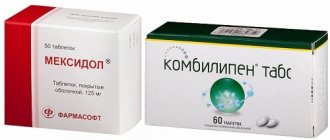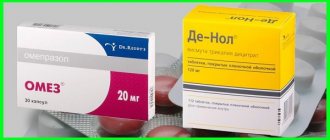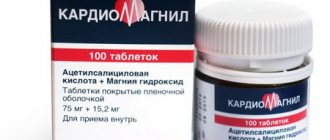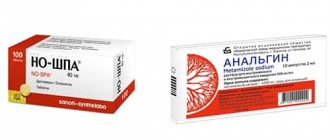Instructions
Bifidumbacterin and Lactobacterin are drugs belonging to the group of probiotics. They are prescribed to adults and children for the treatment of various pathologies associated with disorders of the microflora of organs, as well as for the prevention of dysbacteriosis. Both medicines contain strains of beneficial bacteria. However, they cannot be called analogues, since they contain microorganisms of different types.
Bifidumbacterin and Lactobacterin are drugs belonging to the group of probiotics.
Bifidumbacterin and Lactobacterin: what is the difference
Bifidumbacterin contains live bifidobacteria, Lactobacterin contains live lactobacilli. Both types of microorganisms live in the human body, participate in digestion and perform a protective function: they inhibit the growth of pathogenic microbes and promote the removal of their waste products.
Lactobacillus differs from bifidobacterium in that it lives not only in the intestines, but in the vagina of a healthy woman.
Therefore, drugs based on it are often used in gynecological practice.
Intestinal dysbiosis and the role of probiotics in its correction
It is known that more than 300 species of different microorganisms live in the intestines of a healthy person: bifidobacteria, lactobacilli, non-pathogenic Escherichia coli and many others. The size of this population varies in different parts of the gastrointestinal tract (GIT) and reaches maximum values in the large intestine (approximately 1012 microbes per 1 g of contents) [9]. The composition of the intestinal microflora is quite individual and is formed in the first days of a child’s life. The most important factor in its formation is natural feeding, since human milk contains a number of substances (so-called “bifidus factors”) that contribute to the colonization of the intestines by certain types of microorganisms in certain quantities. Even minor unfavorable changes in a child’s body in the first days of life, especially pathological conditions of the gastrointestinal tract, can cause severe disturbances of the intestinal biocenosis that are difficult to correct in the future [6, 8]. In particular, poor nutrition and irrational antibiotic therapy can cause particular damage to the intestinal microflora during this period [1, 7, 11].
Disturbance of microbial balance in the intestine is called dysbiosis, or intestinal dysbiosis. The main causes of intestinal dysbiosis are various gastrointestinal diseases, especially those associated with impaired intestinal absorption, poor nutrition, and antibiotic therapy (to the greatest extent in the first days of life) [5, 10].
Dysbacteriosis is not only a quantitative and qualitative change in the intestinal microflora. According to the industry standard, intestinal dysbiosis is understood as a clinical and laboratory syndrome that occurs in a number of diseases and clinical situations and is characterized by:
- symptoms of intestinal damage;
- changes in the qualitative and/or quantitative composition of normal microflora;
- translocation of various microorganisms into unusual biotopes;
- excessive growth of microflora.
Normally, bacterial overgrowth in the small intestine is prevented by:
- normal secretion of hydrochloric acid (prevents the proliferation of bacteria in the upper gastrointestinal tract);
- ileocecal valve (prevents the entry of bacteria from the large intestine into the small intestine);
- normal propulsive motility of the small intestine (prevents stagnation of intestinal contents) [4].
The leading role in the formation of dysbacteriosis belongs to the disruption of the population level of bifidobacteria and lactobacilli. Opportunistic bacteria that colonize the intestinal mucosa cause malabsorption of carbohydrates, fatty acids, amino acids, nitrogen, vitamins, and compete with microorganisms of beneficial flora for participation in fermentation and absorption of nutrients supplied with food. Metabolic products (indole, skatole, hydrogen sulfide, etc.) and toxins produced by opportunistic bacteria reduce the detoxification ability of the liver, aggravate the symptoms of intoxication, suppress the regeneration of the mucous membrane, promote the formation of tumors, inhibit peristalsis and cause the development of dyspeptic syndrome [4, 8 , 9].
Microflora in dysbiosis is not able to fully perform the physiological functions inherent in normal microflora, and above all, resist colonization of the intestine by exogenous pathogenic microorganisms.
Factors leading to disruption of normal intestinal flora are numerous. Dysbacteriosis develops in most patients with acute intestinal infections due to the influence of pathogenic microorganisms on the normal flora and ecology of the intestine, and the use of antibacterial drugs (antibiotics and sulfonamides), which suppress not only pathogenic, but also normal intestinal microflora [1, 11]. The development of dysbiosis is promoted by allergies, inflammatory diseases of the digestive tract (diseases of the stomach, occurring with achlorhydria, intestines, pancreas, liver, resection of the stomach and small intestine, impaired peristalsis, in particular stasis in the large intestine), stress, poor nutrition and therapy, endocrine disorders , ionizing radiation. Dysbacteriosis can also be caused by kidney disease, B12- and folate-deficiency anemia, and malignant neoplasms. Dysbacteriosis and secondary immunodeficiency states are formed under conditions of increasing harmful effects of the environment on the human body.
It is important that intestinal dysbiosis is always a secondary condition and, therefore, a search for the root cause is required. In turn, intestinal dysbiosis significantly changes the composition of the internal environment of the intestine, disrupting digestive processes, which has a damaging effect on the intestinal wall. Thus, intestinal dysbiosis cannot be considered a harmless condition: it requires close attention [4].
Intestinal dysbiosis can be obvious (decompensated) and hidden (compensated). Explicit intestinal dysbiosis is usually accompanied by stool disorders - diarrhea or constipation. Hidden intestinal dysbiosis can be suspected in a patient with any gastrointestinal disease, a depressed state of the immune system (for example, with frequent colds, infectious diseases), as well as in patients receiving massive courses of antibacterial therapy.
Elimination of intestinal dysbiosis should begin with treatment of the root cause, i.e., the disease or condition that caused a disturbance in the microbial composition in the intestine, as well as with nutritional correction: the diet, if the patient’s condition allows, should include a sufficient amount of dietary fiber and fermented milk products. The diet should be complete in terms of calories and content of main ingredients. It is advisable to create a diet so that it includes (of course, taking into account the age and condition of the patient) products from rye, corn, buckwheat, millet, cabbage, carrots, zucchini, tomatoes, cucumbers, fresh fruits, juices without preservatives, nuts, fermented milk products , containing live bifidobacteria and lactobacilli and bifidogenic factors. These products contain nutritional components that ensure the normal growth and functioning of intestinal microorganisms, which are called prebiotics. As for children in the first six months of life, adequate breastfeeding is extremely important for them. If it is impossible to provide it, adapted milk formulas containing prebiotics should be used [3, 6]. It is also necessary to timely introduce foods of plant origin into the diet.
These measures may be sufficient to eliminate intestinal dysbiosis, but in some cases it is necessary to prescribe specific drug therapy.
Currently, the most widely used drugs for the correction of dysbiosis are those containing live microorganisms that have a positive effect on the composition of the intestinal microbiocenosis, the so-called probiotics. Probiosis actually means a community of two organisms that promotes the life of both partners, probiotic is an organism participating in symbiosis. According to the classical definition, probiotics are live microorganisms that have a beneficial effect on human health by normalizing the intestinal microflora. Probiotics are widely used as dietary supplements, in yoghurts and other dairy products, and in pharmaceuticals. Microorganisms included in probiotics must be non-pathogenic, non-toxigenic and remain viable during long-term storage [9]. The following main groups of probiotics are distinguished [4]:
- preparations containing living microorganisms and structural components;
- preparations containing a complex of living microorganisms, their structural components and metabolites in various combinations;
- preparations based on living genetically engineered strains of microorganisms;
- functional food products that can restore the microbial ecology of the host organism.
For this purpose, preparations containing microorganisms that are common inhabitants of the intestine, including bifidobacteria and lactobacilli, as well as microorganisms that do not normally live in the human intestine (for example, Bacillus cereus IP 5832 or Saccharomyces boulardii) can be used. These drugs can be monocomponent, i.e. include only one type of microorganism, or multicomponent. It has been proven that the following microorganisms have a positive effect on the intestinal microflora: Lactobacillus (L.) acidophilus, L. GG, L. fermentum, Strepto- (Entero-)coccus faecium SF68, Streptococcus (S.) termophilus, Bifidobacterium (B.) bifidum . In this regard, to correct intestinal dysbiosis, it is most advisable to use multicomponent drugs containing the above microorganisms. These drugs are usually prescribed in courses lasting at least 1 month.
In recent years, the term “biotherapeutic agents” (BTA) has been increasingly used. BTAs are pharmaceutical products consisting of living microorganisms that have therapeutic properties and are used as drugs for the prevention and treatment of specific diseases caused by pathogenic microbes. The basis for BTA, as a rule, are bacteria - representatives of the normal intestinal microflora: B. longum, B. bifidum, B. breve, B. infantis, L. acidophilus, L. plantarum, L. casei, L. bulgaricus, Enterococcus faecium. The use of representatives of the saprophytic intestinal flora as part of BTA provides a positive and rapid effect when taking the drug, and also guarantees safety for the child’s body.
Modern bacterial preparations (bifidumbacterin, lactobacterin, linex, etc.) belong to the category of biotherapeutic, i.e., medicinal drugs. The mechanism of action of biotherapeutic drugs is due to the presence of a number of functional properties in the microorganisms that make up their composition: the ability to survive in an acidic environment, effectively attach to the epithelial cells of the intestinal mucosa and colonize it, produce antimicrobial substances, cause stimulation of the immune system, prevent excessive growth and proliferation of pathogens microbes and restore normal intestinal microflora [4].
Moving along the digestive tract, microorganisms retain their viability and provide a temporary beneficial effect on the intestinal microflora, modifying its composition and metabolic activity. Probiotics can be included in food as dietary supplements in the form of lyophilized powders containing bifidobacteria, lactobacilli, and their combinations [3].
The effectiveness of probiotics depends on many factors: their composition, the state of the microflora of the human body, lifestyle, etc. The most frequently prescribed and best studied are probiotics made from bifidobacteria and lactobacilli.
Probiotics must meet the following requirements:
- have a positive effect on the host’s body;
- do not cause side effects with long-term use;
- have colonization potential, i.e. persist in the digestive tract until the maximum positive effect is achieved (be resistant to low acidity, bile acids, antimicrobial toxins and enzymes produced by pathogenic microflora);
- have stable clinical efficacy and simplicity of production technology [4].
It is known that hydrochloric acid and pepsin of the stomach are quite a serious obstacle to the advancement of microorganisms. However, a significant proportion of bifidobacteria and lactobacilli taken orally successfully overcome this barrier and ultimately end up in the colon. In total, when taken orally, from 20 to 40% of bifidobacteria and lactobacilli pass through the entire digestive tract. The survival of bacteria in the gastrointestinal tract increases with the simultaneous intake of food, which not only reduces the acidity of gastric contents and plays the role of a kind of buffer, but also creates favorable conditions for the nutrition of microorganisms, performing a prebiotic function. Despite the fact that after administration, bacteria are found in the stool for 1 to 3 weeks, the colonizing ability of bifidobacteria and lactobacilli in the intestine is low. Therefore, to ensure the constant presence of microorganisms in the intestinal microflora and achieve a lasting positive effect from the use of bifidobacteria and lactobacilli, preparations containing them must be taken continuously for a long time and in significant quantities [3, 9].
The results of numerous studies confirm that infections of the digestive tract can be prevented or cured by the use of bifidobacteria and lactobacilli. The greatest amount of data has been accumulated on the treatment of rotavirus gastroenteritis with lactic acid bacteria. L. acidophilus quickly eliminates diarrhea. The same strain shows high effectiveness against the fungus Candida albicans. The duration of diarrhea caused by viral infection in children is significantly reduced after taking L. GG. The inhibitory effect of L. acidophilus on salmonella has also been shown. The effect of bifidobacteria and lactobacilli in travelers' diarrhea has been confirmed [2].
Bifidobacteria and lactobacilli used as part of probiotics ensure stabilization of the microflora of the human body, restore its disturbed balance, as well as the integrity of epithelial cell formations and stimulate the immunological functions of the mucous membrane of the digestive tract. Enterococci and coli bacteria have a greater immunomodulatory effect.
Synbiotics are defined as a combination of probiotics and prebiotics that have a positive effect on the health of the host by promoting the survival and colonization ability of live bacterial supplements in the intestine and selectively stimulating the growth and metabolic activation of lactobacilli and bifidobacteria.
“Classical” prebiotic preparations contain live, but specially processed bacteria, representing the normal intestinal microflora, which should “take root” in the intestines of a sick child for some time. These can be monopreparations: containing bifidobacteria (bifidumbacterin dry, biovestin); lactobacilli (lactobacterin, acylact); non-pathogenic Escherichia (colibacterin dry, romacol) or their combinations (linex, bifiform, bificol dry, biovestin-lacto, bifacid, primadophilus); Bacillus subtilis (liquid sporobacterin, biosporin); Bacillus cereus (bactisubtil); propionic acid bacteria (evita); medicinal yeast Saccharomyces boulardii (Enterol), - or combined - containing, in addition to living microorganisms, various additives in the form of sorbents (Bifidumbacterin forte, Probifor), vitamins (Nutrolin-B), immunoprotectors (Acipol, Bifacid, Bifiliz dry, Kipacid).
A special group consists of drugs containing metabolites of microorganisms (disaccharides, organic acids) and other stimulants of the reproduction of normal microflora, which include para-aminomethylbenzoic acid (Pamba, Amben), Hilak Forte, etc.
It is important that probiotics are prescribed not as replacement therapy, but as a means of providing conditions for the restoration of normal microflora. Numerous probiotic preparations are used to treat intestinal dysbiosis.
Recently, synbiotics, which are a rational combination of probiotics, microbial metabolites and prebiotics, have been of great interest, which has a positive effect on the health of the host organism, promoting the survival and engraftment of live bacterial additives in the intestines and selectively stimulating the growth and activation of metabolism of lacto- and bifidobacteria ( normoflorin-L, normoflorin-B, normoflorin-D, gastrofarm, bioflor, etc.).
Bifidobacteria preparations are the largest group of probiotic preparations containing various strains of bifidobacteria (both representatives of normal intestinal microflora and synthetic strains). Bifidobacteria preparations are used for the treatment and prevention of dysbiosis, some (Bifidumbacterin forte, etc.) in the treatment with antibacterial drugs for the prevention of antibiotic-associated dysbiosis, etc. Bifidobacteria do not have a toxic effect on the child’s body, so bifidobacteria preparations have practically no contraindications.
Preparations of lactobacilli. The active principle of these probiotics is live lactobacilli. Corrective therapy with lactose-containing probiotics can be prescribed together or sequentially for 2–3 days after treatment with specific bacteriophages designed to eliminate opportunistic bacteria, or with targeted chemotherapy drugs.
It is not advisable to prescribe lactose-containing drugs for moderate, severe and protracted forms of candidiasis, since the acids produced by lactobacilli help to increase the quantitative composition of fungi of the genus Candida [3].
Coli-containing preparations are made on the basis of live bacteria Escherichia coli strain M-17, which have antagonistic activity, immunocorrective action, and have a local and systemic protective effect.
Preparations containing cultures of bacteria with antagonistic activity. The therapeutic effect of drugs from non-pathogenic representatives of the genus Bacillus (sporobacterin liquid, bactisporin, biosporin, bactisubtil) and medicinal yeast Saccharomyces Boulardii (enterol) is due to their pronounced antagonistic properties against a wide range of pathogenic and opportunistic microorganisms. These probiotics synthesize a complex of enzymes that stimulate digestion. There are different points of view on the use of bacterial preparations containing aerobic spore-forming bacteria. There are indications that artificial introduction of these bacteria into the intestine in large quantities and excessive proliferation of bacilli in an uncharacteristic microbiotope, accompanied by the spread of bacilli outside the intestine, can worsen the patient’s condition. Therefore, it is recommended to prescribe these drugs for a short time, followed by the use of bifido- and lactose-containing probiotics.
The yeast fungi Saccharomyces Boulardii belong to higher unicellular organisms - eukaryotes. Their genetic natural feature is resistance to the action of all groups of antibiotics, sulfonamides and other antimicrobial agents. At the same time, they are sensitive to fungicidal agents. Currently, Saccharomyces Boulardii colonies are grown on standard media, then enzymatically treated, lyophilized and stored in powder form. Lyophilized yeast cells are revived in the stomach environment as well as in the aerobic conditions of the intestines.
Complex of probiotics and their metabolites. Despite their fairly widespread use, bacterial preparations based on living microorganisms are not always highly effective. This may be due to the rapid elimination of strains introduced into an aggressive environment due to the high tolerance of the immune system to its own microflora. High cost also limits their use. The solution to the problems of correcting dysbiosis may lie in the development and introduction into clinical practice of fundamentally new drugs created on the basis of components of microbial cells or their metabolites. Such drugs exert their positive effect on the physiological functions and biochemical reactions of the host organism, either directly interfering with the metabolic activity of the cells of the corresponding organs and tissues, or indirectly through the regulation of the functioning of biofilms on the mucous membranes of the macroorganism.
Thus, the correction of dysbiosis in both children and adults seems to be a multifaceted problem that requires taking into account both the root cause of its occurrence and many associated factors. However, effective means of correcting the composition of intestinal microflora have now been developed and introduced into everyday practice, and the doctor, guided by his knowledge and experience, can determine the combination that is most appropriate for each individual patient.
Literature
- Eryukhin I. A., Shlyapnikov S. A., Lebedev V. F., Ivanov G. A. Pseudomembranous colitis and “intestinal sepsis” are a consequence of dysbiosis caused by antibiotics // Bulletin of Surgery named after. I. I. Grekova. 1997. T. 156. No. 2. P. 108–111.
- Mazankova L.N. Clinical and pathogenetic significance of changes in intestinal microflora in children with acute intestinal infections and methods for their correction: abstract. dis. ...Dr. med. Sci. M., 1995.
- Ursova N. I. Microflora disorders and dysfunction of the biliary tract in children: a guide for practicing physicians / ed. G. V. Rimarchuk. M.: Prototype, 2005. 224 p.
- Khavkin A.I. Microflora of the digestive tract. M., 2006. 416 p.
- Tsvetkova L.N., Shcherbakov P.L., Salmova V.S., Vartapetova E.E. Results of biocorrectional support in children receiving anti-helicobacter therapy // Pediatric gastroenterology. 2002. pp. 482–484.
- Benno Y., Sawada K., Mitsuoka T. The intestinal microflora of infants: composition of fecal flora in breast-fed and bottle-fed infants//Microbiol. Immunol. 1984; 28(9): 975–986.
- Edlund C., Nord CE Effect on the human normal microflora of oral antibiotics for treatment of urinary tract infection//J. Antimicrob Chemoter. 2000; 46 1: 41–41.
- Fanaro S., Chierici R., Guerrini P., Vigi V. Intestinal microflora in early infancy: composition and development//Acta. Paediatr. Suppl. 2003; 91:48–55.
- Fuller R. Probiotics in man and animals // Journal of Applied Bacteriology. 1989; 66(5): 365–378.
- McFarland LV Risk factor for antibiotic-associated diarrhea. A review of the literature//Ann. Med. Interne. (Paris). 1998; 149(5): 261–266.
- Sullivan A., Edlund C., Nord CE Effect of antimicrobial agents on the ecological balance of human microflora//Lancet Infect. Dis. 2001; 1 (2): 101–114.
S. V. Belmer , Doctor of Medical Sciences A. V. Malkoch , Candidate of Medical Sciences Russian State Medical University, Moscow
Indications for use
The instructions for use of Bifidumbacterin indicate that it is used for the correction of microbiocenosis in the preoperative and postoperative period, as well as for the treatment and prevention of:
- mastitis in nursing women;
- intestinal dysbiosis;
- acute intestinal infections;
- chronic constipation and diarrhea.
Lactobacterin is prescribed for dysbacteriosis that has developed during antibiotic therapy, intestinal infections, colitis, pancreatitis, and pathologies of the female genital area.
Lactobacterin is prescribed for dysbacteriosis that has developed during antibiotic therapy, intestinal infections, colitis, pancreatitis, and pathologies of the female genital area.
INSTRUCTIONS FOR USE
bifidumbacterin and lactobacterin in liquid form
Bifidumbacterin and lactobacterin in liquid form are included in the “List of vital and essential medicines” approved by the Ministry of Health of Russia on January 3, 1992.
The drug is a daily monoculture of bifidobacteria (B.longum, B.bifidum, B.adolescentis) or lactobacilli (L.acidophillus, L.fermentum, L.plantarum) in a milk-hydrolyzate medium. It has the appearance of a cloudy liquid of uniform light brown color with various shades, with sediment and a pleasant sour taste. The concentration of live bifidobacteria or lactobacilli in the preparation is 108 microbial cells per 1 ml. There is no foreign microflora.
A high quantitative level of bifidobacteria and lactobacilli normalizes the microflora of the gastrointestinal tract, suppresses the development of putrefactive bacteria and other pathogenic microflora on the mucous membranes (including the urogenital system), wound surfaces and skin. The drug is involved in the synthesis of vitamins B1, B2, B6, B12, B15, K, folic acid, biotin, etc., increases the digestibility of food proteins, and stimulates the immune system.
Lactose and cow's milk protein are absent. Completely natural, without preservatives, dyes, taste adapters.
Bifidumbacterin and lactobacterin should be stored in the refrigerator at T=6±2°C. The shelf life guaranteeing the preservation of the specified concentration of microbial cells is 30 days. At all stages (transportation, storage, consumption), sanitary and hygienic rules must be observed.
Purpose of the drug
Bifidumbacterin and lactobacterin in liquid form are indicated for widespread use:
·in infectology
: for acute infections caused by various types of pathogens (dysentery, salmonellosis, escherichiosis, viral gastroenteritis, giardiasis and other protozoa), cholestatic forms of viral hepatitis, tonsillitis (by rinsing), sepsis of various etiologies;
·in gastroenterology
: for intestinal dysbiosis, impaired digestion and absorption in patients with chronic diseases of the stomach, pancreas, liver and bile ducts, small and large intestines;
·in pediatrics
: in premature and weakened children, for the prevention and treatment of staphylococcal and other types of dysbiosis in newborns, with the early transfer of children to artificial feeding or donor milk, with malnutrition, rickets, anemia, food allergies, with the complex treatment of patients with pneumonia, purulent septic diseases, etc. diseases for which antibiotics, sulfonamides and other antimicrobial agents are used, as well as immunosuppressants (including corticosteroids), in children whose mothers have lactostasis, cracked nipples or resume breastfeeding after recovery from mastitis;
·in oncology and hematology
: when prescribing radiation therapy (especially in the abdominal area), cytostatics, hormones, immunosuppressants;
·in gerontology
: in the treatment of chronic digestive disorders, chronic constipation, cancer;
·in gynecology and obstetrics
: for colpitis and cervicitis of various etiologies, prenatal preparation of pregnant risk groups with impaired cleanliness of the intravaginal sector, for the prevention of mastitis in nursing women;
·in dermatology and allergology
: for food allergies, neurodermatitis, psoriasis, pyoderma, seborrheic dermatitis;
·in dentistry
: for periodontal disease (periodontitis) and gingivostomatitis;
·in surgery
: for trophic ulcers and long-term non-healing wounds;
·in cosmetology
: to improve skin properties.
The drugs are recommended for preventive treatment during or after a course of antibiotics, sulfonamides and chemotherapy drugs, for various types of immunodeficiency, as well as for people who have hazardous working conditions or live in environmentally unfavorable areas.
Directions for use and dosage
Before using the drug, mix the contents of the bottle with a slight circular motion, remove the cap and stopper, pour out the required amount, after which the bottle is closed and stored in the refrigerator. When taken orally, the drug is consumed in its pure form or diluted with water or milk at room temperature in a ratio of 1:2 - 1:4 30-40 minutes before meals.
When taking the drug in a complex, lactobacterin is drunk in the morning, and bifidumbacterin in the evening.
When taken orally
:
5 ml - 1 teaspoon, 15 ml - 1 tablespoon
Newborns
from the first day of life to 6 months, 1-3 ml 3 times a day. Course 20-30 days.
For children
over 6 months up to 3 years 3-5 ml 2 times a day. From 3 to 7 years 5 ml 2 times a day. From 7 to 14 years 7 ml 2 times a day. Course 20-30 days.
For adults
10-15 ml 2 times a day, course 14-30 days.
For acute infectious diseases, the dosage is increased by 2-3 times.
The frequency and dose may be changed according to the doctor’s recommendation.
For sore throats
: 5-10 ml of undiluted preparation for prolonged rinsing of the mouth, 3-4 times a day after meals, 20-30 minutes later. Course 7-14 days.
In gynecology
: 15-20 ml of undiluted lactobacterin per tampon or bifidumbacterin and lactobacterin in a ratio of 1:3, intravaginally for 2-3 hours. Course 10 days.
In dermatology and surgery
: application of undiluted drug using four-layer napkins 2-3 times a day until dry. Course 5-7 days.
In cosmetology
: a napkin moistened with undiluted preparation is applied to the face and neck after a hot compress for 25-30 minutes.
For intestinal upset: take bifidumbacterin for diarrhea, and lactobacterin for constipation.
The preparations can be used as a starter for the preparation of fermented milk products.
Contraindications for use.
There are no contraindications for use.
The drug was prepared in accordance with TU 9229-005-23059295-03.
You can ask questions about the use of drugs, leave your feedback and suggestions, and also order home delivery of drugs by calling: 917-28-46, 917-26-41
Special instructions for the use of Bifidumbacterin and Lactobacterin
Patients with lactose intolerance and allergies should take Lactobacterin under the supervision of a physician.
It is not advisable to take Bifidumbacterin orally along with antibacterial drugs.
Oral forms of the drug in powder form cannot be diluted with water at temperatures above +40°C, as this can lead to the death of bacteria.
Pregnancy and lactation
Probiotics can be used during pregnancy and breastfeeding as prescribed by a doctor.
Childhood
Preparations in the form of suppositories are contraindicated in children under 3 years of age. Dosage forms for oral administration (powder sachets or capsules) are prescribed by the pediatrician taking into account the weight of the small patient.
Elderly age
Taking probiotics in increased dosages in elderly patients is not advisable. The optimal dose is calculated by the doctor based on the indications.











